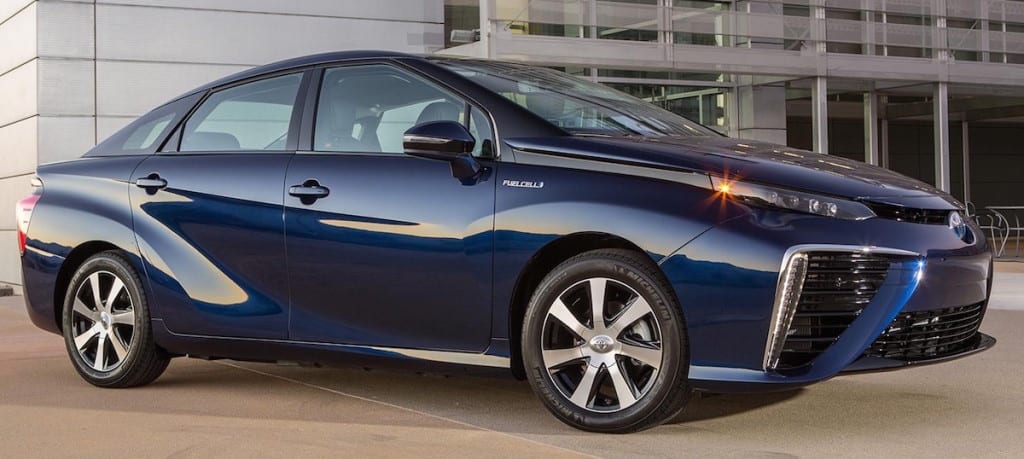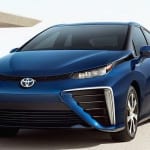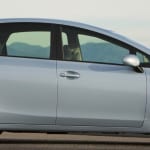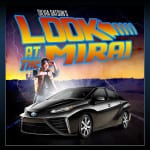In just two months of exposure, support for Toyota’s Mirai has grown tremendously in the state of California. Luckily, Toyota is currently reviewing its existing order requests. And no worries, 49 other states, unless you’re a new Toyota dealership in California, you don’t have to worry about supporting the rush of hydrogen-based-car-fans that Toyota has induced with the Mirai.
The automaker announced that it has nearly 1,900 orders for the Mirai from the U.S. alone, which is more than the expected initial production run. So, there’s good news and bad news with this.
The Good News First
Good news: Toyota is slated to begin delivering cars to customers this month!
Bad news: Toyota estimates that it will be able to allocate only 1,000 models to the United States in its first year.
Initial Production
Toyota has planned to reach a target of 3,000 units to sell or lease through 2017. They are expecting to almost double that number by 2020. Because it’s such a unique car with specific needs, Toyota has the task of making sure the Mirai is sold and treated responsibly to a good customer base.
Who Gets A Mirai?
The Mirai is the first mass produced hydrogen vehicle to be sold in the U.S. and everyone has their hand in the air for one. The list is long and getting longer. While Toyota has admitted that not everyone will get one right away, they are more than happy to meet the demand of the public as awareness and infrastructure continues to grow.
Screening Process
While the decision for who gets one first isn’t a ‘first come first serve’ process, there are requirements Toyota wants the initial buyers to meet. Part of the decision process is based on proximity to hydrogen stations.
While this does add hinderance to the sales of the Mirai, Toyota has a larger obligation to make sure the customer experience is optimal rather than just exciting to sell. To ensure this occurs, they have had to developed an entire customer division around the Mirai.
Positive Customer Experience
Ed LaRocque, Toyota’s national marketing manager for the Mirai, wants to get this right the first time for new their new market. Realizing that the Mirai isn’t the for everyone, Toyota has already decided to be selective with who they sell the car to first.
While this may sound snobbish or even pretentious, the unique demands of the car will require specific knowledge and education. Toyota has already unveiled a plan and held conferences on providing this education to new buyers which will create a positive customer experience.
Increased Production
In January 2015, Toyota announced it will increase global production capacity for the Mirai to cope with “overwhelming demand in all markets.” It’s a good thing Toyota could foresee the need for increased production, but it’s questionable if they fore saw this much interest.
The website Toyota used for placing orders went live two months ago and in that short amount of time has attracted 1900 interested buyers. Customers are currently being redirected to a wait list, where they practice their patience and watch as production catches up to the very high demand. Then, the customer on the waitlist is contacted upon availability.
Creating Infrastructure
Because Toyota is in the business of mobility and not fueling, they have teamed up with First Element Fuels and Air Liquide to create the infrastructure needed to support hydrogen fuel stations for hydrogen vehicles.
Toyota is aware they have a decent amount of caveats to jump while introducing this product to the public. While creating a strong customer experience is certainly one, another is creating a community of and economy for hydrogen fueled cars.
Toyota’s Craig Scott, manager of national alternative fuel sources, recognizes the infrastructure is about ten years behind the Mirai and other hydrogen vehicles already on the roads.
California: Leading the States
California is currently the most and almost only state prepared for a hydrogen fueled vehicle. Boasting what’s named “Hydrogen Highway”, which is a public/private partnership that started back in 2004 in the hopes of producing a hydrogen transportation economy, California has been ahead of the game and awaiting the Mirai’s arrival for quite some time now.
However, in the 11 years that Hydrogen Highway has been in existence it’s still only part of the 9 hydrogen stations that are currently operational in the state of California.
Hydrogen Stations
There is already planning and funding for 48 more stations to be available. The immediate goal is for 10-15 to be ready and running by the end of 2015. Next year, Scott would like to see another 20 more stations opened.
Hydrogen stations are set up the same as gasoline pumps are. The hydrogen nozzle works the similarly as a gas nozzle and is even has the same placement on the car where the opening for the gas take would be. The difference being that the hydrogen nozzle plugs into a piece on the car and is locked into place for pumping.
Right now hydrogen has a costs of $3-$3.50 GGE (gasoline gallon equivalent) which is certainly comparable to the price of gasoline right now. However, the hydrogen stations that were and are already in use suffer from disrepair. The investment into creating not just a community, but environment where hydrogen cars become part of the working landscape is a future that is worth looking into and at least investing education and knowledge in.
Capturing An Audience
While there are currently other hydrogen cars being driven in Japan, the Toyota Mirai is the only mass produced hydrogen car available in America. It is also one of the only FCVs available for purchase rather than just lease.
Competitively priced at $57,500, Toyota is hoping to capture the same energy conscious audience who have remained loyal fans of the Prius. Toyota wants to stay ahead and lead the industry in not just battery or electric powered vehicles, but also in hydrogen fueled vehicles.
Hydrogen Power
The onboard hydrogen fuel cells generate the electricity which powers the 153 horsepower electric motor. While 153 horsepower can be a less than impressive number, the instant torque of electric vehicles gives the impression of much more power.
The hydrogen tanks and fuel cells are placed in the middle lower of the car which provides a greater center of gravity and with better weight distribution than gas powered cars. This means that it is actually better than its 4,078 lb. curb weight which only adds to its prowess.
How It Works
Even though a fuel celled vehicle, or FCV, has been in the works for Toyota since the same time as work began on the Prius, the practicality of its arrival hasn’t been around as long.
Fuel cells work when the combining hydrogen and oxygen across a catalyst to produce an electric current. The only byproduct of using hydrogen as fuel is water vapor. Once hydrogen has been pumped into the vehicle, it is stored in carbon fiber fuel tanks where it is then called upon for use.
It’s usage is quite efficient getting an optimum of 300 miles per gallon. 300 miles. That should be enough to make even the biggest skeptics eyes widen.
Toyota: Bringing the Future to Us
Understandably enough, the biggest hurdle Toyota will have to jump to in convincing America to go the way of hydrogen vehicles is creating a workable and efficient infrastructure. With California currently being the only state who can sustain this energy, it will serve as a sort of test run for the rest of the country.
Even then, state funding for this infrastructure will vary quite a bit as well. Regardless of its immediate success, it’s a step in the right direction and we thank Toyota for once again, bringing us back to the future. (insert Huey Lewis & the News song here)







